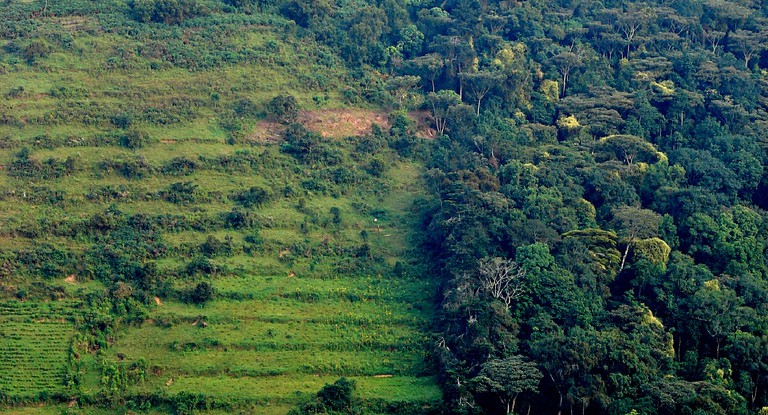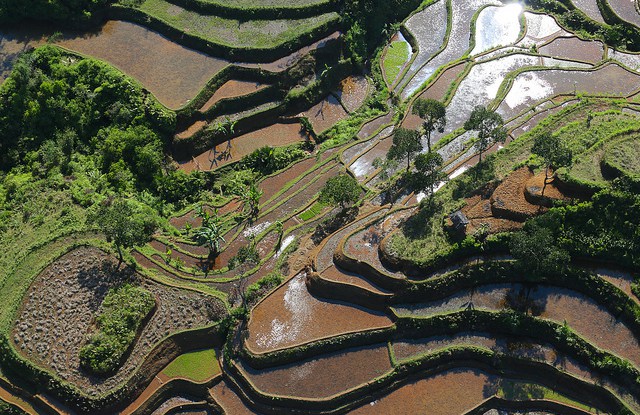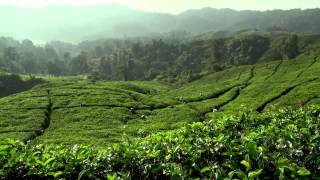BOGOR, Indonesia — All forests are not the same and all agricultural systems are not the same, says a top expert who urges land-use policies that better reflect complexities on the ground.
“People talk about agriculture and forests as if it’s all one similar system, whereas we actually have many different types of forests, many different types of agriculture that connect to forests, and the connections themselves are quite varied,” said Cheryl Palm, a Senior Research Scientist and Director of Research at the Agriculture and Food Security Center at Columbia University.
In an interview, Palm lamented the slow progress on these issues since the 1970s and called for an approach that takes into account the differences she mentions.
“I believe by disaggregating the discussion by forest type, by agriculture, we can be more productive.”
Palm is one of six panelists sharing ‘big ideas’ at the Colloquium on Forests and Climate: New Thinking for Transformational Change in New York on 24 September. The Colloquium is jointly organized by the Center for International Forestry Research (CIFOR) and the Earth Institute at Columbia University. An edited transcript of her interview with CIFOR follows.
Q: What is the ‘big idea’ you’ll be discussing at the event?
A: People talk about agriculture and forests as if it’s all one similar system, whereas we actually have many different types of forests, many different types of agriculture that connect to forests, and the connections themselves are quite varied.
The discussion has to become more specific about the types of forests, and the types of agriculture impinging on or benefiting from those forests. Perhaps with a more targeted discussion we might make more progress in our research and in finding the evidence we need to provide informed decisions about managing the forest–agriculture interface.
The pendulum keeps moving from conservation versus development, then conservation and development. Most people would agree that we need both forests (conservation) and agriculture (development). The question is how do we do that? The current drafts of the UN Sustainable Development Goals promote sustainable agriculture (under Goal 2) and the protection and restoration of terrestrial ecosystems, including forests (Goal 15). The manner in which agricultural development proceeds will very much determine the extent and integrity of forests yet the connections between these two goals are weak.
We’ve been talking about these things since the 1970s and I don’t see as much progress as we need. I believe by disaggregating the discussion by forest type, by agriculture, we can be more productive.
Q: Why do you think we haven’t seen much progress?
A: Perhaps because the players change, and the context changes, because the tropics are changing so quickly – and changing differently in the various tropical regions.
There have also been very few measurements taken on either the agriculture side, or the forest side, for the different ecosystem services and their connections. We have many measurements of deforestation (or not) and the changes in carbon stocks, but with little assessment of the interface and the changes that are happening, other than whether there’s forest cover or not.
The background information is often behind-the-scenes, and it’s important to really provide opportunities to speak up about them, and understand how decisions were or could be made
This focus and type of research is changing to include the ecosystem services from forests and agriculture and how these change with land-use change and agricultural intensification – but it needs much more emphasis if we are to have the evidence needed to make informed decisions on conservation and sustainable development.
Q: Can you talk about an example from your field work?
A: Well, if you think of a tropical humid forest, and the types of agriculture that can come in, on the one hand there’s the story about soybeans in the Brazilian Amazon and how the current policies have managed to contain deforestation after years of extensive agricultural expansion. It’s a very different story if you go to the humid forests of Ghana, where complex cacao agroforests are still the major kind of agriculture occurring in the humid forest belt.
There are many examples where you have trees as agriculture, in a place where trees are the natural system. In other places they’re being displaced. So you get very different types of stories.
Another example is the dry sub-humid tropics of Africa, the miombo woodlands. That’s slow degradation of forests partially as a result of agriculture rather than rapid deforestation. Most of it so far has been small-scale farming, but this could change rapidly. And we don’t yet know if we have sufficient information to guide this process that will result in sustainable agriculture and the conservation of forests and ecosystem services.
Q: So is it possible to come up with a way to approach all these differences, given the heterogeneity?
A: Yes, I think it is, but you need to look at what are the desired outcomes, both from the forest and from the agriculture – is there a possibility they can be combined or are they very separate. If one is thinking about biodiversity then they probably need to be separate but for other ecosystems services that may not be the case.
Q: Why is it important to have events like these where we discuss these issues?
A: I think to get the dialogue out into the public. The background information is often behind-the-scenes, and it’s important to really provide opportunities to speak up about them, and understand how decisions were or could be made.
Q: What ideas do you want people to leave the event thinking about?
A: People need to look more at the ecosystem services provided by forests. As climate change becomes an issue, we need to look more and more closely at the water service of forests and natural systems around agricultural lands.
And also that you have to approach these dilemmas with an interdisciplinary group. Conservationists can’t do it all alone, agriculturalists can’t do it all alone – we need to work together.
We want you to share Forests News content, which is licensed under Creative Commons Attribution-NonCommercial-ShareAlike 4.0 International (CC BY-NC-SA 4.0). This means you are free to redistribute our material for non-commercial purposes. All we ask is that you give Forests News appropriate credit and link to the original Forests News content, indicate if changes were made, and distribute your contributions under the same Creative Commons license. You must notify Forests News if you repost, reprint or reuse our materials by contacting forestsnews@cifor-icraf.org.


